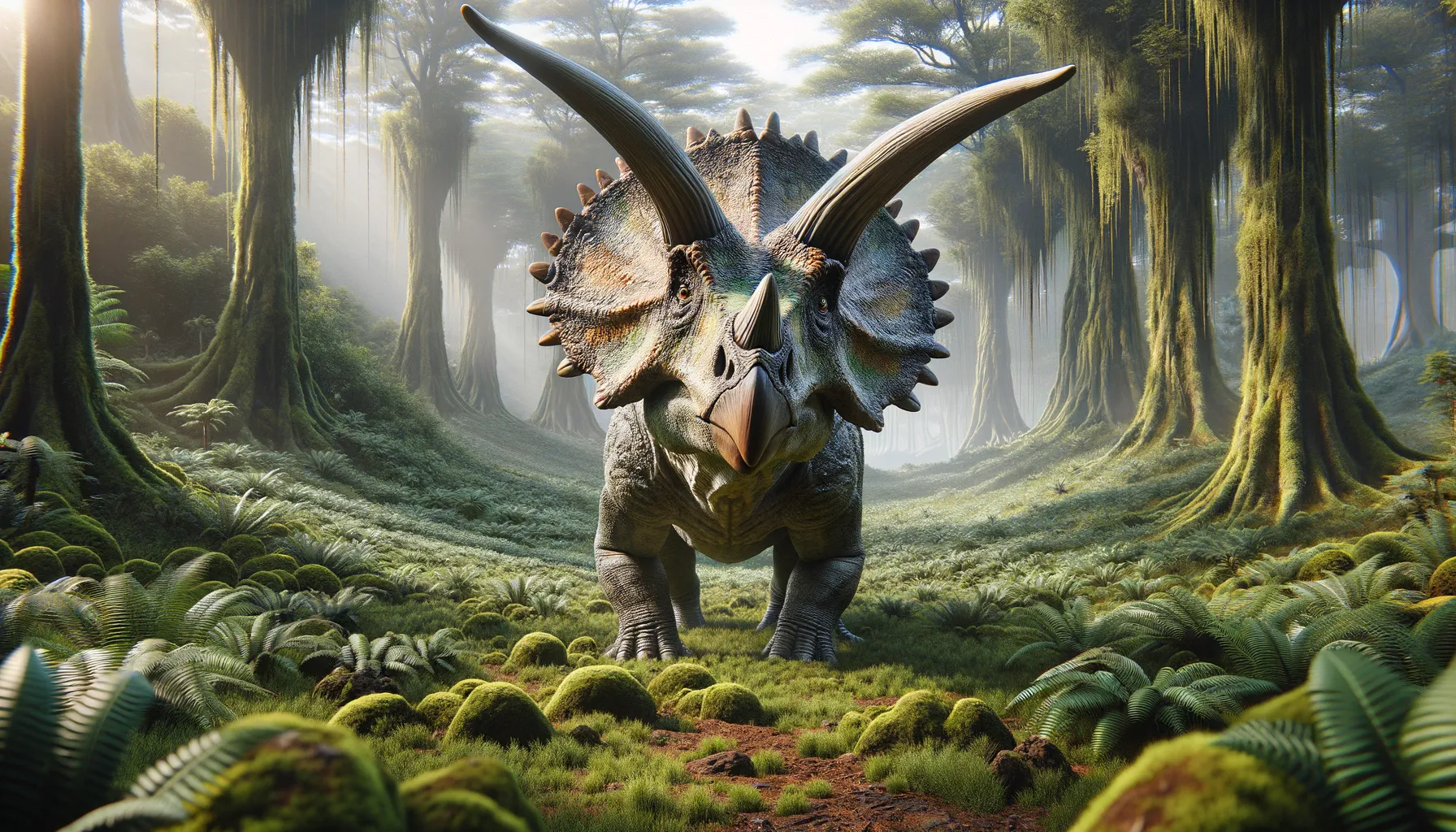
Xenoceratops
Horns and frills of the ancient plains.
Period
Cretaceous
Length
Approximately 20 feet long.
Height
Around 6.6 feet tall.
Weight
About 2 tons.
Xenoceratops was a horned dinosaur from the Cretaceous period, notable for its large frills and two prominent brow horns. It roamed what is now North America, and its fossils provide valuable insights into the diversity and evolution of horned dinosaurs. Despite its substantial size, Xenoceratops was a herbivore, feeding on the lush vegetation of its era.
Diet
Xenoceratops was a herbivore, feeding primarily on the leaves, fruits, and other plant materials growing in its environment. Its beak-like mouth helped it strip leaves and vegetation, making it well-adapted to a plant-based diet.
Hunting
As a herbivore, Xenoceratops did not engage in hunting. Instead, it likely spent much of its day foraging for food, such as leaves and shrubs, which were abundant in its environment.
Environmental challenges
Xenoceratops faced environmental challenges such as climate changes and fluctuations in vegetation availability, which would impact its food sources. Predators posed another challenge, with theropods possibly preying on younger or weaker individuals. The changing landscapes, with rivers and forests, required adaptation for survival in various terrains, from open areas to wooded lands.
Speed
Slow, likely moved at a walking pace.
Lifespan
Estimated to live around 20 to 30 years.
First discovery
Discovered in 1958 in Alberta, Canada.
Fun Facts
- Xenoceratops was a horned dinosaur that lived around 78 million years ago during the Late Cretaceous period.
- The name 'Xenoceratops' means 'alien horned face', which reflects its unique and unusual horn arrangement.
- Xenoceratops is known from fossils found in Canada, making it one of the earliest known large ceratopsid dinosaurs in North America.
- This dinosaur was about 20 feet long and weighed around two tons, roughly the size of a modern rhinoceros.
- Xenoceratops had a large frill at the back of its head, adorned with intricate patterns of spikes and knobs.
- It likely lived in herds and fed on the lush ferns and conifers that dominated its habitat.
- Xenoceratops belonged to a group of dinosaurs known as ceratopsians, which include the famous Triceratops.
Growth and Development
Young Xenoceratops would have experienced rapid growth, developing their signature horns and frills as they matured. These physical features likely played a role in species identification and possibly in mating displays. The growth patterns suggest that the horns and frills were not just for defense but also crucial in social interactions within the species.
Habitat
Xenoceratops inhabited lush, subtropical regions that provided plenty of vegetation for sustenance. Its habitat consisted of floodplains and river valleys, which supplied fresh water and a variety of plants. These fertile areas supported diverse ecosystems, allowing Xenoceratops to thrive alongside other herbivores and predators of its time.
Interaction with other species
Xenoceratops likely lived in herds, providing safety in numbers against predators. It may have had mutualistic relationships with other herbivores, benefiting from group foraging dynamics. Predation pressures from carnivorous dinosaurs would have influenced Xenoceratops's behavior, driving it to adopt defensive formations when threatened.
Natural lifespan
Xenoceratops likely had a natural lifespan of 20 to 30 years.
Reproduction
Xenoceratops reproduced through laying eggs, like most dinosaurs. It is likely that nests were constructed in safe, secluded areas to protect the vulnerable eggs from predators. Parental care, if present, could have involved guarding the nests to ensure the young hatched safely and were protected in the early stages of life.
Social behaviour
Xenoceratops was likely a social animal, traveling in herds which provided protection and facilitated social interactions. These herds might have had complex social hierarchies influenced by physical displays using their horns and frills. Such behavior helped establish dominance and facilitated group coordination.
Fossil locations
Fossils of Xenoceratops have primarily been found in the Foremost Formation of Alberta, Canada. These discoveries provide significant insights into North America's horned dinosaur ecosystems from the Cretaceous period. The site has revealed fragments of skulls that have expanded our understanding of ceratopsid diversity.
